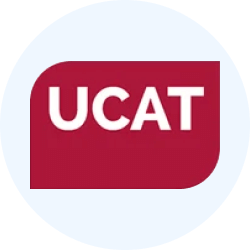UCAT Exam > UCAT Questions > Wind power supports rural grids in developing...
Start Learning for Free
Wind power supports rural grids in developing nations, supplying 20% of energy in 2025. A 2024 Kenyan project added 800 MW, powering 400,000 homes. Turbines, costing $950,000 per MW, deter 25% of investors. Subsidies in 55% of countries cover 30% of costs. Maintenance, at $30,000 yearly per turbine, strains 15% of budgets. Public support, at 65% in rural areas, drives adoption. Regulations in 70% of countries enforce safety. Developing nations, with 45% of wind potential, lack funding in 50% of regions. Small-scale turbines are ideal for rural access. Energy output, at 2,900 MWh per turbine, supports grids. Wind power is crucial for energy equity.
What is the author’s purpose?
What is the author’s purpose?
- a)To persuade
- b)To inform
- c)To critique
- d)To entertain
Correct answer is option 'A'. Can you explain this answer?
Most Upvoted Answer
Wind power supports rural grids in developing nations, supplying 20% o...
The passage emphasizes benefits (“ideal,” “crucial”) to advocate wind power, indicating a persuasive purpose.
Free Test
FREE
| Start Free Test |
Community Answer
Wind power supports rural grids in developing nations, supplying 20% o...
Understanding the Author's Purpose
The author's primary purpose is to persuade readers of the benefits and potential of wind power in developing nations.
Key Elements of Persuasion
- Highlighting Impact: The author notes that wind power can supply 20% of energy in 2025, suggesting a significant shift in energy dynamics.
- Statistical Evidence: By providing concrete data, such as the 800 MW project in Kenya that powers 400,000 homes, the author strengthens their argument for wind energy's effectiveness.
- Addressing Challenges: The mention of costs deterring investors (25%) and maintenance strains (15% of budgets) acknowledges existing barriers, making the argument more credible and balanced.
Encouraging Adoption
- Public Support: The fact that 65% of rural populations support wind energy indicates a favorable environment for investment and implementation, which is persuasive for potential stakeholders.
- Regulatory Framework: The enforcement of safety regulations in 70% of countries reassures investors and advocates for responsible energy development.
Emphasizing Energy Equity
- Equity Focus: By asserting that wind power is crucial for energy equity, the author appeals to the ethical standpoint of ensuring energy access for all, particularly in underfunded regions.
- Potential for Small-Scale Solutions: The mention of small-scale turbines highlights practical solutions for rural access, making it easier for stakeholders to envision implementable projects.
In summary, the author's use of data, acknowledgment of challenges, and emphasis on public support and equity all serve to persuade readers that wind power is a viable and essential solution for energy needs in developing nations.
The author's primary purpose is to persuade readers of the benefits and potential of wind power in developing nations.
Key Elements of Persuasion
- Highlighting Impact: The author notes that wind power can supply 20% of energy in 2025, suggesting a significant shift in energy dynamics.
- Statistical Evidence: By providing concrete data, such as the 800 MW project in Kenya that powers 400,000 homes, the author strengthens their argument for wind energy's effectiveness.
- Addressing Challenges: The mention of costs deterring investors (25%) and maintenance strains (15% of budgets) acknowledges existing barriers, making the argument more credible and balanced.
Encouraging Adoption
- Public Support: The fact that 65% of rural populations support wind energy indicates a favorable environment for investment and implementation, which is persuasive for potential stakeholders.
- Regulatory Framework: The enforcement of safety regulations in 70% of countries reassures investors and advocates for responsible energy development.
Emphasizing Energy Equity
- Equity Focus: By asserting that wind power is crucial for energy equity, the author appeals to the ethical standpoint of ensuring energy access for all, particularly in underfunded regions.
- Potential for Small-Scale Solutions: The mention of small-scale turbines highlights practical solutions for rural access, making it easier for stakeholders to envision implementable projects.
In summary, the author's use of data, acknowledgment of challenges, and emphasis on public support and equity all serve to persuade readers that wind power is a viable and essential solution for energy needs in developing nations.

|
Explore Courses for UCAT exam
|

|
Question Description
Wind power supports rural grids in developing nations, supplying 20% of energy in 2025. A 2024 Kenyan project added 800 MW, powering 400,000 homes. Turbines, costing $950,000 per MW, deter 25% of investors. Subsidies in 55% of countries cover 30% of costs. Maintenance, at $30,000 yearly per turbine, strains 15% of budgets. Public support, at 65% in rural areas, drives adoption. Regulations in 70% of countries enforce safety. Developing nations, with 45% of wind potential, lack funding in 50% of regions. Small-scale turbines are ideal for rural access. Energy output, at 2,900 MWh per turbine, supports grids. Wind power is crucial for energy equity. What is the author’s purpose?a)To persuadeb)To informc)To critiqued)To entertainCorrect answer is option 'A'. Can you explain this answer? for UCAT 2025 is part of UCAT preparation. The Question and answers have been prepared according to the UCAT exam syllabus. Information about Wind power supports rural grids in developing nations, supplying 20% of energy in 2025. A 2024 Kenyan project added 800 MW, powering 400,000 homes. Turbines, costing $950,000 per MW, deter 25% of investors. Subsidies in 55% of countries cover 30% of costs. Maintenance, at $30,000 yearly per turbine, strains 15% of budgets. Public support, at 65% in rural areas, drives adoption. Regulations in 70% of countries enforce safety. Developing nations, with 45% of wind potential, lack funding in 50% of regions. Small-scale turbines are ideal for rural access. Energy output, at 2,900 MWh per turbine, supports grids. Wind power is crucial for energy equity. What is the author’s purpose?a)To persuadeb)To informc)To critiqued)To entertainCorrect answer is option 'A'. Can you explain this answer? covers all topics & solutions for UCAT 2025 Exam. Find important definitions, questions, meanings, examples, exercises and tests below for Wind power supports rural grids in developing nations, supplying 20% of energy in 2025. A 2024 Kenyan project added 800 MW, powering 400,000 homes. Turbines, costing $950,000 per MW, deter 25% of investors. Subsidies in 55% of countries cover 30% of costs. Maintenance, at $30,000 yearly per turbine, strains 15% of budgets. Public support, at 65% in rural areas, drives adoption. Regulations in 70% of countries enforce safety. Developing nations, with 45% of wind potential, lack funding in 50% of regions. Small-scale turbines are ideal for rural access. Energy output, at 2,900 MWh per turbine, supports grids. Wind power is crucial for energy equity. What is the author’s purpose?a)To persuadeb)To informc)To critiqued)To entertainCorrect answer is option 'A'. Can you explain this answer?.
Wind power supports rural grids in developing nations, supplying 20% of energy in 2025. A 2024 Kenyan project added 800 MW, powering 400,000 homes. Turbines, costing $950,000 per MW, deter 25% of investors. Subsidies in 55% of countries cover 30% of costs. Maintenance, at $30,000 yearly per turbine, strains 15% of budgets. Public support, at 65% in rural areas, drives adoption. Regulations in 70% of countries enforce safety. Developing nations, with 45% of wind potential, lack funding in 50% of regions. Small-scale turbines are ideal for rural access. Energy output, at 2,900 MWh per turbine, supports grids. Wind power is crucial for energy equity. What is the author’s purpose?a)To persuadeb)To informc)To critiqued)To entertainCorrect answer is option 'A'. Can you explain this answer? for UCAT 2025 is part of UCAT preparation. The Question and answers have been prepared according to the UCAT exam syllabus. Information about Wind power supports rural grids in developing nations, supplying 20% of energy in 2025. A 2024 Kenyan project added 800 MW, powering 400,000 homes. Turbines, costing $950,000 per MW, deter 25% of investors. Subsidies in 55% of countries cover 30% of costs. Maintenance, at $30,000 yearly per turbine, strains 15% of budgets. Public support, at 65% in rural areas, drives adoption. Regulations in 70% of countries enforce safety. Developing nations, with 45% of wind potential, lack funding in 50% of regions. Small-scale turbines are ideal for rural access. Energy output, at 2,900 MWh per turbine, supports grids. Wind power is crucial for energy equity. What is the author’s purpose?a)To persuadeb)To informc)To critiqued)To entertainCorrect answer is option 'A'. Can you explain this answer? covers all topics & solutions for UCAT 2025 Exam. Find important definitions, questions, meanings, examples, exercises and tests below for Wind power supports rural grids in developing nations, supplying 20% of energy in 2025. A 2024 Kenyan project added 800 MW, powering 400,000 homes. Turbines, costing $950,000 per MW, deter 25% of investors. Subsidies in 55% of countries cover 30% of costs. Maintenance, at $30,000 yearly per turbine, strains 15% of budgets. Public support, at 65% in rural areas, drives adoption. Regulations in 70% of countries enforce safety. Developing nations, with 45% of wind potential, lack funding in 50% of regions. Small-scale turbines are ideal for rural access. Energy output, at 2,900 MWh per turbine, supports grids. Wind power is crucial for energy equity. What is the author’s purpose?a)To persuadeb)To informc)To critiqued)To entertainCorrect answer is option 'A'. Can you explain this answer?.
Solutions for Wind power supports rural grids in developing nations, supplying 20% of energy in 2025. A 2024 Kenyan project added 800 MW, powering 400,000 homes. Turbines, costing $950,000 per MW, deter 25% of investors. Subsidies in 55% of countries cover 30% of costs. Maintenance, at $30,000 yearly per turbine, strains 15% of budgets. Public support, at 65% in rural areas, drives adoption. Regulations in 70% of countries enforce safety. Developing nations, with 45% of wind potential, lack funding in 50% of regions. Small-scale turbines are ideal for rural access. Energy output, at 2,900 MWh per turbine, supports grids. Wind power is crucial for energy equity. What is the author’s purpose?a)To persuadeb)To informc)To critiqued)To entertainCorrect answer is option 'A'. Can you explain this answer? in English & in Hindi are available as part of our courses for UCAT.
Download more important topics, notes, lectures and mock test series for UCAT Exam by signing up for free.
Here you can find the meaning of Wind power supports rural grids in developing nations, supplying 20% of energy in 2025. A 2024 Kenyan project added 800 MW, powering 400,000 homes. Turbines, costing $950,000 per MW, deter 25% of investors. Subsidies in 55% of countries cover 30% of costs. Maintenance, at $30,000 yearly per turbine, strains 15% of budgets. Public support, at 65% in rural areas, drives adoption. Regulations in 70% of countries enforce safety. Developing nations, with 45% of wind potential, lack funding in 50% of regions. Small-scale turbines are ideal for rural access. Energy output, at 2,900 MWh per turbine, supports grids. Wind power is crucial for energy equity. What is the author’s purpose?a)To persuadeb)To informc)To critiqued)To entertainCorrect answer is option 'A'. Can you explain this answer? defined & explained in the simplest way possible. Besides giving the explanation of
Wind power supports rural grids in developing nations, supplying 20% of energy in 2025. A 2024 Kenyan project added 800 MW, powering 400,000 homes. Turbines, costing $950,000 per MW, deter 25% of investors. Subsidies in 55% of countries cover 30% of costs. Maintenance, at $30,000 yearly per turbine, strains 15% of budgets. Public support, at 65% in rural areas, drives adoption. Regulations in 70% of countries enforce safety. Developing nations, with 45% of wind potential, lack funding in 50% of regions. Small-scale turbines are ideal for rural access. Energy output, at 2,900 MWh per turbine, supports grids. Wind power is crucial for energy equity. What is the author’s purpose?a)To persuadeb)To informc)To critiqued)To entertainCorrect answer is option 'A'. Can you explain this answer?, a detailed solution for Wind power supports rural grids in developing nations, supplying 20% of energy in 2025. A 2024 Kenyan project added 800 MW, powering 400,000 homes. Turbines, costing $950,000 per MW, deter 25% of investors. Subsidies in 55% of countries cover 30% of costs. Maintenance, at $30,000 yearly per turbine, strains 15% of budgets. Public support, at 65% in rural areas, drives adoption. Regulations in 70% of countries enforce safety. Developing nations, with 45% of wind potential, lack funding in 50% of regions. Small-scale turbines are ideal for rural access. Energy output, at 2,900 MWh per turbine, supports grids. Wind power is crucial for energy equity. What is the author’s purpose?a)To persuadeb)To informc)To critiqued)To entertainCorrect answer is option 'A'. Can you explain this answer? has been provided alongside types of Wind power supports rural grids in developing nations, supplying 20% of energy in 2025. A 2024 Kenyan project added 800 MW, powering 400,000 homes. Turbines, costing $950,000 per MW, deter 25% of investors. Subsidies in 55% of countries cover 30% of costs. Maintenance, at $30,000 yearly per turbine, strains 15% of budgets. Public support, at 65% in rural areas, drives adoption. Regulations in 70% of countries enforce safety. Developing nations, with 45% of wind potential, lack funding in 50% of regions. Small-scale turbines are ideal for rural access. Energy output, at 2,900 MWh per turbine, supports grids. Wind power is crucial for energy equity. What is the author’s purpose?a)To persuadeb)To informc)To critiqued)To entertainCorrect answer is option 'A'. Can you explain this answer? theory, EduRev gives you an
ample number of questions to practice Wind power supports rural grids in developing nations, supplying 20% of energy in 2025. A 2024 Kenyan project added 800 MW, powering 400,000 homes. Turbines, costing $950,000 per MW, deter 25% of investors. Subsidies in 55% of countries cover 30% of costs. Maintenance, at $30,000 yearly per turbine, strains 15% of budgets. Public support, at 65% in rural areas, drives adoption. Regulations in 70% of countries enforce safety. Developing nations, with 45% of wind potential, lack funding in 50% of regions. Small-scale turbines are ideal for rural access. Energy output, at 2,900 MWh per turbine, supports grids. Wind power is crucial for energy equity. What is the author’s purpose?a)To persuadeb)To informc)To critiqued)To entertainCorrect answer is option 'A'. Can you explain this answer? tests, examples and also practice UCAT tests.

|
Explore Courses for UCAT exam
|

|
Signup for Free!
Signup to see your scores go up within 7 days! Learn & Practice with 1000+ FREE Notes, Videos & Tests.


















